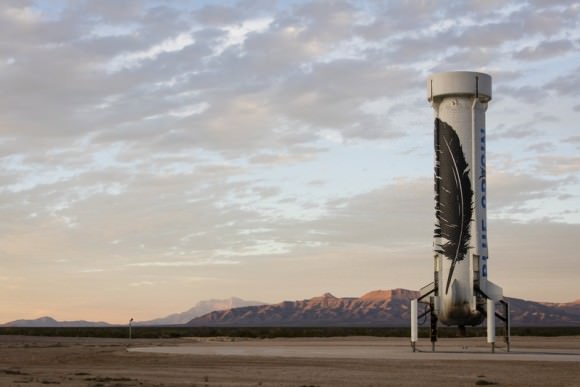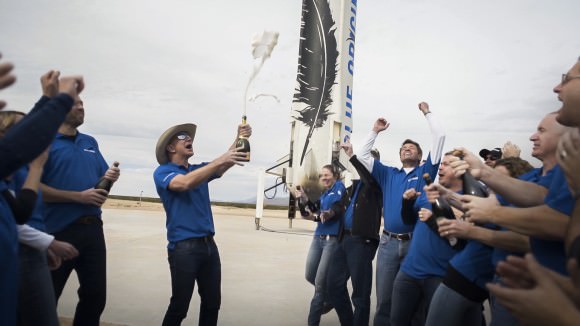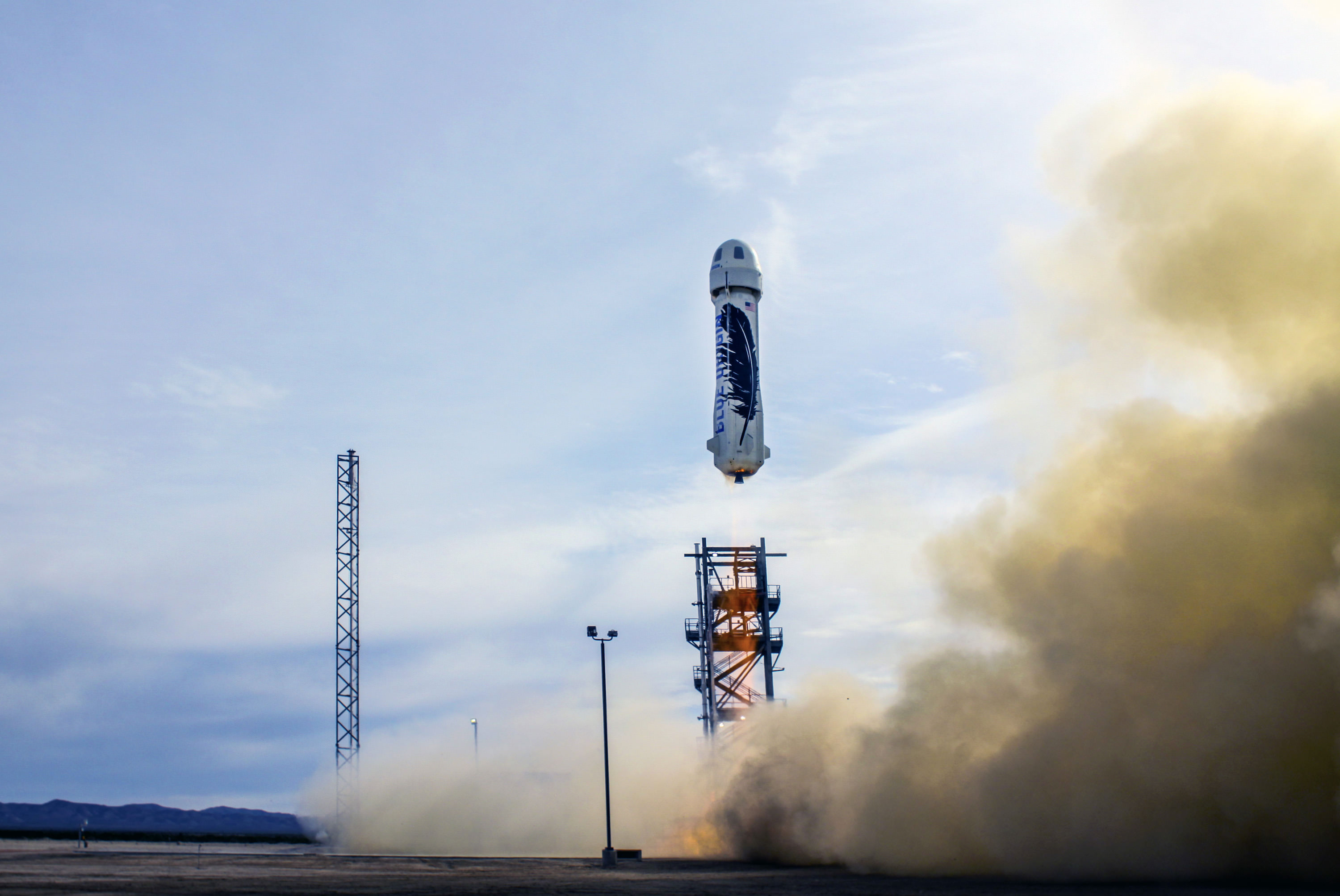Commercial space company Blue Origin achieved a huge milestone by successfully launching their New Shepard rocket to suborbital space and landing it dead center on target – and upright – back at their proving grounds in West Texas. This is the first successful landing of a reusable vertical takeoff, vertical landing (VTVL) rocket that has reached space.
“This flight validates our vehicle architecture and design,” said founder Jeff Bezos, the billionaire who also started Amazon.com.

The suborbital flight launched Monday, November 23, 2015 at 11:21 a.m. CST from West Texas, reaching an altitude of 329,839 feet (100.5 kilometers) and a speed of Mach 3.72, which is about 2,854 mph (4,593 km/h), according a press release posted on the Blue Origin website.
Bezos said it was “flawless mission” for the Blue Origin team and for the reusable rocket, powered by the company’s own BE-3 engine, which uses liquid hydrogen and liquid oxygen and produces 110,000-lbf thrust.
“We are building Blue Origin to seed an enduring human presence in space, to help us move beyond this blue planet that is the origin of all we know,” Bezos said in the press release. “We are pursuing this vision patiently, step-by-step. Our fantastic team in Kent, Van Horn and Cape Canaveral is working hard not just to build space vehicles, but to bring closer the day when millions of people can live and work in space.”
The capsule also landed successfully, returning to Earth on 3 parachutes.
Blue Origin released a video of the flight — which was not a crewed flight. The video oddly goes from actual footage of the launch to an animation of a crew inside the capsule, and then back to footage of the booster landing.
Bezos explained the landing:
“Our unique ring fin shifted the center of pressure aft to help control reentry and descent; eight large drag brakes deployed and reduced the vehicle’s terminal speed to 387 mph; hydraulically actuated fins steered the vehicle through 119-mph high-altitude crosswinds to a location precisely aligned with and 5,000 feet above the landing pad; then the highly-throttleable BE-3 engine re-ignited to slow the booster as the landing gear deployed and the vehicle descended the last 100 feet at 4.4 mph to touchdown on the pad.”
The goal of the New Shepard fully-reusable spacecraft is to carry people on suborbital spaceflights to experience weightlessness and view the Earth through the largest windows to ever fly in space. Science can also be done on these suborbital mission.
The Commercial Spaceflight Federation lauded the “historic landing,” saying Blue Origin has “demonstrated the economic viability of reusability, a revolutionary approach to spaceflight that counts fellow CSF Members Masten Space Systems and SpaceX among its pioneers. Reusable rocketry holds the promise of driving down launch costs and decreasing turn-around time.”
On April 29 of this year, Blue Origin flew the first developmental test flight of the New Shepard space vehicle. The engine worked flawlessly on launch, sending the rocket to its planned test altitude of 307,000 feet (58 miles, or 93.5 km). But the landing failed when pressure was lost in the hydraulic system on descent.
Bezos said he has always been a big fan of the vertical takeoff, vertical landing architecture. “We chose VTVL because it’s scalable to very large size,” he wrote on the company’s blog in April. “We’re already designing New Shepard’s sibling, her Very Big Brother – an orbital launch vehicle that is many times New Shepard’s size and is powered by our 550,000-lbf thrust liquefied natural gas, liquid oxygen BE-4 engine.”

Bezos has said he was inspired as a child watching the Apollo missions to the Moon. “You don’t choose your passions; your passions choose you,” he told CNN.
Bezos made the announcement of the successful test flight early today (Nov. 24) on social media:
The rarest of beasts – a used rocket. Controlled landing not easy, but done right, can look easy. Check out video: https://t.co/9OypFoxZk3
— Jeff Bezos (@JeffBezos) November 24, 2015
Later, SpaceX CEO Elon Musk tweeted his congratulations: “Congrats to Jeff Bezos and the BO team for achieving VTOL on their booster.” But then, Musk also wanted to state the difference in what Blue Origin achieved and what SpaceX is trying to do with their resuable Falcon.
It is, however, important to clear up the difference between "space" and "orbit", as described well by https://t.co/7PD42m37fZ
— Elon Musk (@elonmusk) November 24, 2015


This announcement rocks my whirled! Imagine.. positive test results for a Mars landing and ascent engine! Solar powered electrolytic fuel conversion anyone?
I went over to the Blue Horizon’s web page and watched the video of the successful flight.. WAY COOL!
The landing looked pretty ‘edgey’ in that only at the very last second does the rocket seem to stabilize and zero in to get vertical for the landing. But it worked! It seems as though the shorter rocket is easier to control for the landing as excess pitch is dampened much faster than with a taller booster?
You guys at SpaceX better get on it… you’ve got company!
https://www.blueorigin.com/